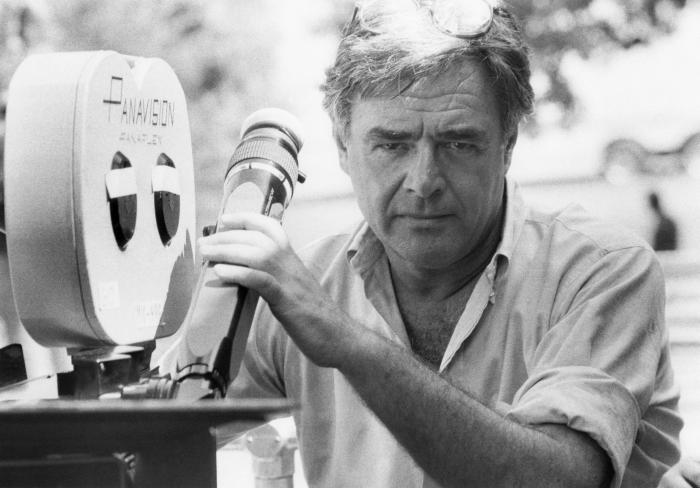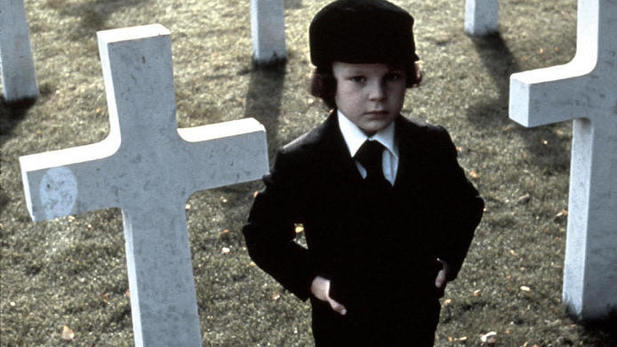
With a brand new 30th Anniversary release on home video of the 1985 hit THE GOONIES, people are now reminded of the pedigree and legendary talent of veteran director Richard Donner.
His filmography and scope of vision have lasted for over 50 years, from cutting his directorial teeth on TV series like THE TWILIGHT ZONE in the 1960s, to blockbusters from the late 1970s and beyond.
The golden era for Donner began in 1976, with the low-budget horror thriller THE OMEN. This modest production, shot principally in England with a mostly-British crew, was also indirectly responsible, after it’s success was assured, in part for allowing the distributor, Twentieth Century Fox, to take a risk on an independent science-fiction film from a young director the year of it’s release by the name of STAR WARS and two of its crew, director of photography Gilbert Taylor and make-up artist Stuart Freeborn, were recruited from that shoot to fulfill the vision of George Lucas.
In 1977, producer team Alexander and Ilya Salkind, coming off the success of their THREE MUSKETEERS films with Richard Chamberlain and Michael York, decided to bring a brand-new sparkling contemporary version of SUPERMAN to the big-screen, selecting Donner as their director of choice.
This stunning blockbuster comic-book adaptation was shot at Pinewood Studios over two years and like THE OMEN, utilised many top British technicians, among them production designer John Barry, cinematographer Geoffrey Unsworth and special effects men Derek Meddings and Roy Field, along with composer John Williams and a cast headed by Marlon Brando, who was paid millions for 12 days of work.
The star of the show as the title character was then-unknown Christopher Reeve, who even today remains the Super-man to beat on the big screen. Indeed, every new big-screen adventure since the first SUPERMAN in 1978 of that character has looked to Donner’s version as the major influence on its style. It has also been cited as a catalyst for the current vogue of Marvel and DC offerings making the grade today.
Many directors would be satisfied to have at least one hit film on their filmography to be proud of, but Donner was not finished. With the success of THE GOONIES alongside BACK TO THE FUTURE (both Steven Spielberg productions), producer Joel Silver (48 HRS, STREETS OF FIRE) brought Donner on board for another film, initially modest in budget, but which would spawn three sequels and usher in an action blockbuster era from 1987 onwards.
LETHAL WEAPON (1987) was the dark tale of a suicidal Vietnam veteran turned LA cop, Martin Riggs (Mel Gibson) haunted by the death of his wife killed in a car accident, who is teamed with Lt. Roger Murtaugh (Danny Glover) to investigate the suspected suicide of the daughter of a Vietnam buddy of Murtaugh which quickly mushrooms into a drug-related tragedy. The action and chemistry of Gibson (returning to the screen after a break of 18 months) with Glover delighted audiences and in a rare example, Donner would go on to helm the other three sequels, LETHAL WEAPON 2 (1989), LETHAL WEAPON 3 (1992) and LETHAL WEAPON 4 (1998) , all of which made even more money than the original. It was down to the success of that film on home video that brought people out to watch the sequel in increasing numbers.
THE GOONIES, which Donner produced with OMEN producer Harvey Bernhard, also brought together some of the best child and teen talent on show at the time, among them Josh Brolin (currently appearing opposite Emily Blunt in SICARIO) and Corey Feldman, who went on to appear in STAND BY ME and THE LOST BOYS after appearances in GREMLINS.
Looking back, Donner’s work encompasses so much of the range of movies that have pleased audiences over the last 30 years. His work doesn’t just cover blockbusters. In 1980, he helmed a modest film about a cripple called INSIDE MOVES, starring John (THE DEER HUNTER) Savage and co-scripted by Barry (RAIN MAN) Levinson. This film has rarely been seen since its original theatrical release, but is well-liked by critics and fans who have and is available now digitally.





























